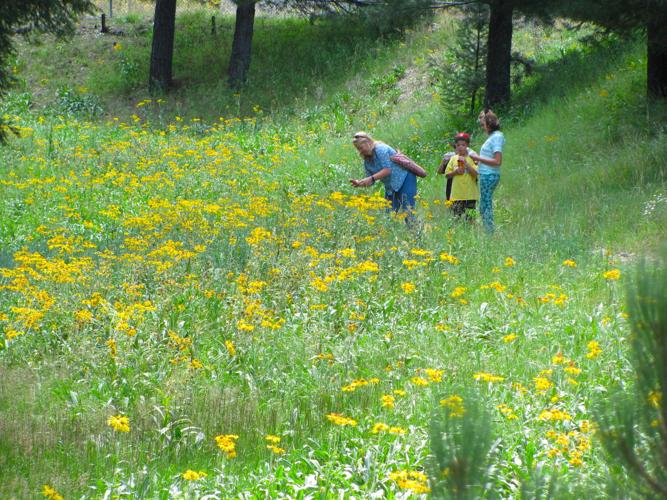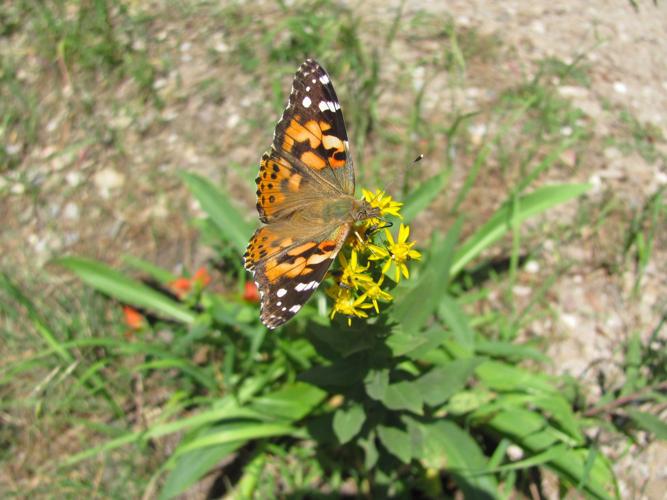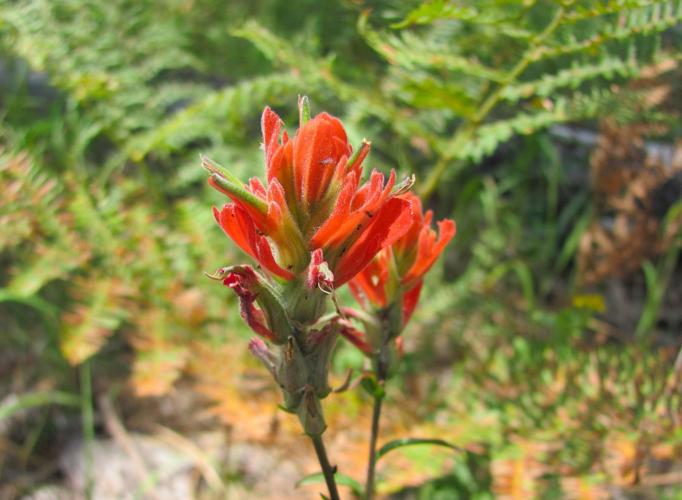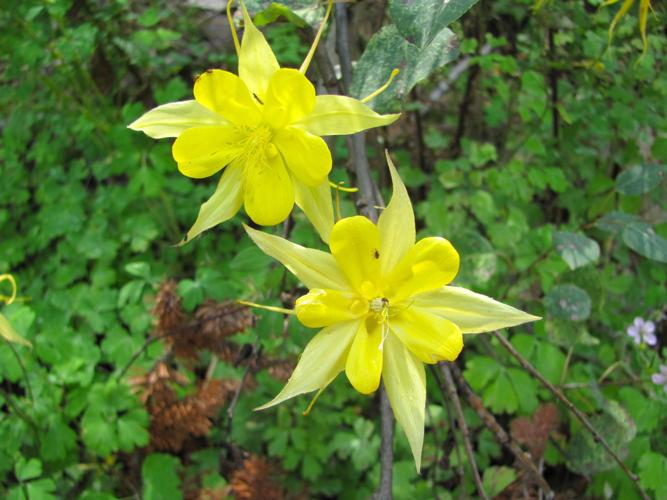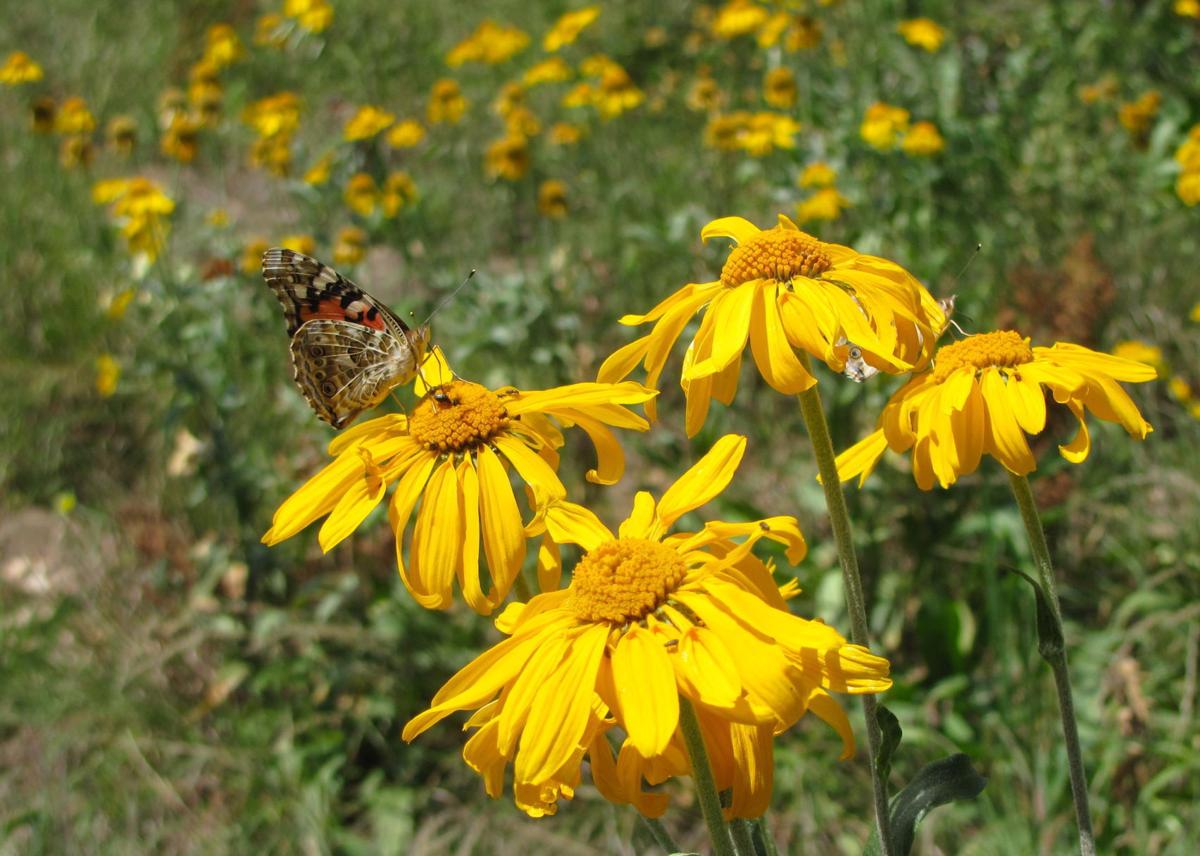Hundreds of colorful butterflies are fluttering over forests and meadows high in the Catalina Mountains this month — visiting wildflowers nurtured by monsoon rains earlier in the summer.
Numerous hikers on the Meadow Trail near Mount Lemmon, the 9,157-foot high point of the Catalinas, have paused in recent days to capture photo and video images of butterflies and blooms.

Hikers stop to admire and photograph wildflowers along the Meadow Trail in the Catalina Mountains.
The butterflies in many of the photos appear to be the painted lady variety, said John Palting, a graduate student in entomology at the University of Arizona who has studied butterflies in great detail.
The painted lady variety “is well known to have large migrations when populations reach a certain size, and it appears that one such mass migration might be going on in the mountains right now,” Palting said. “This is probably related to the abundant monsoon moisture this year and the resultant lush growth.
“Several species of local butterflies seem to exhibit this migration behavior when their populations reach critical size,” he said. “Besides painted ladies, snout and sulfur butterflies are known to do it. Unlike with the monarch, which migrates to known localities, where these species go seems less defined and more random.”

A red paintbrush wildflower blooms in the Catalinas.
Howard Byrne, curator of herpetology, ichthyology and invertebrate zoology at the Arizona-Sonora Desert Museum, said the emergence of so many butterflies this year is probably because factors such as temperature, moisture and humidity were favorable.
Some species, such as the painted lady, are especially adaptable, Byrne said.
“One neat thing about painted ladies is that they can use different kinds of plants to lay their eggs on,” he said. “They can use plants growing at high elevations, mid-elevations and low elevations. Painted ladies are all over the place here at the Desert Museum right now. They’re having a banner year at all elevations.”

The increase in butterflies is likely related to the abundant monsoon moisture this year.
COMPLEX LIFE CYCLE
A butterfly flitting from flower to flower might look like a simple, if beautiful, little creature.
In fact, butterflies are insects with an amazingly complex life cycle involving four distinct stages. Here’s a brief description of that life journey:
- A butterfly begins as a tiny, round or cylindrical egg laid by an adult butterfly.
- After a few days, a wormlike creature emerges from the egg. It’s a caterpillar, or larva, and it begins eating leaves and flowers.
- The caterpillar grows quickly and makes a chrysalis, or pupa, a sort of protective covering. In the chrysalis, the caterpillar changes shape dramatically in a remarkable transformation known as metamorphosis.
- Finally, the chrysalis opens and — voila! — a butterfly comes out. Within a few hours, the butterfly learns to fly and eventually searches for a mate. When its eggs are laid, the life cycle begins anew.

Columbine wildflowers near the top of the Catalina Mountains.


